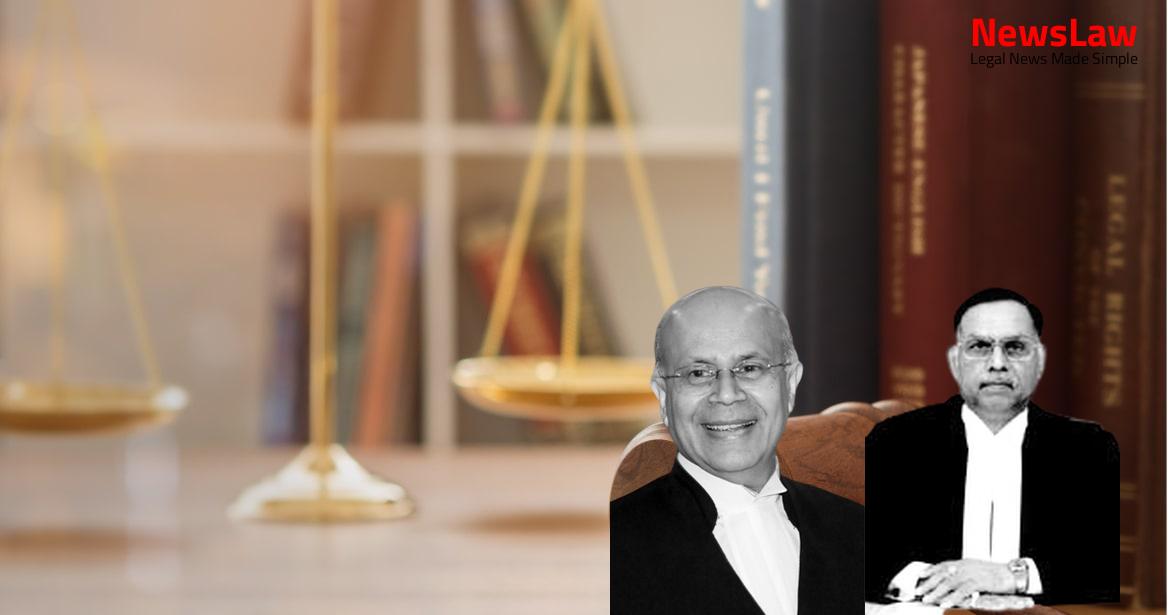In a recent legal case, the court provided a detailed analysis of resolution plan eligibility in the context of bankruptcy law. The focus was on interpreting exclusion clauses and balancing stakeholder interests. Let’s unravel the complexities of legal interpretation in the resolution process.
Facts
- RBL Bank filed an appeal against an order dated 18.12.2017, setting forth conditions for approval of the resolution plan.
- Indian Overseas Bank approved the resolution plan.
- Bank of Maharashtra sent a letter with conditions for approval of the resolution plan.
- National Company Law Appellate Tribunal heard an appeal by Punjab National Bank (Respondent No.10) in Company Appeal (AT) (Insolvency) No. 330 of 2017.
- Section 29A(h) was further amended on 06.06.2018, affecting resolution plan eligibility.
- The resolution plan was ultimately approved with 78.50% voting share and techno-economic viability.
- Adjudicating authority approved the resolution plan on 18.04.2018.
- Respondent No.3 submitted a revised resolution plan.
- Appeal was dismissed as withdrawn due to resolution plan approval with required voting share.
- Respondent No.3 then submitted a modified resolution plan.
- Appellant challenged the order in Company Appeal (AT)(Insolvency) No 194 of 2018.
- Meetings were held with the Committee of Creditors (CoC) regarding the resolution plan.
- Section 29A(c) and (h) were introduced and discussed regarding resolution plan eligibility.
- Respondent No.3 filed an application for a declaration of eligibility under Section 29A.
- Two resolution plans were received, one authored by Respondent No.3.
- Appellate tribunal allowed withdrawal of appeal by Punjab National Bank.
- The issue of eligibility was not raised before the adjudicating authority.
Also Read: Compliance with Article 22(5) of the Constitution: Duty to Serve Grounds of Detention
Arguments
- Counsels for the Respondents rely on various decisions including Swiss Ribbons (P) Ltd. v. Union of India, K.N. Rajkumar v. V.N. Nagarajan, Arcellor Mittal India Pvt. Ltd. v. Satish Kumar Gupta, Committee of Creditors, Essar Steel India Ltd. v. Satish Kumar Gupta, and Apollo Joti LLC & Ors. v. Jyoti Structures Ltd.
- The learned Solicitor General refers to the judgment in K. Shashidhar vs. Union of India.
- The revised plan submitted to the appellate tribunal was never approved by the adjudicating authority.
Also Read: Dismissal of Application Seeking Bail Relief
Analysis
- The issue of privity becomes inapplicable once the Adjudicating Authority confirms the Resolution Plan under Section 31(1) of the IBC.
- The purpose of bankruptcy law is to solve a ‘contracting failure’ during financial distress.
- Bar on eligibility arises when a guarantee in favor of a creditor is invoked before or during insolvency resolution proceedings.
- No privity in law to question eligibility if not party to earlier proceedings.
- Focus on achieving requisite voting percentage at the time of resolution plan submission or adjudication.
- Resolution process aims to protect the interests of the corporate debtor, separating them from promoters or management.
- Adjudicating authority’s approval based on viability reports and consideration of the plan.
- Any subsequent ineligibility after plan submission will be governed by amended provisions.
- Resolution Plan governed by IBC cannot be rejected if compliant, binding on all stakeholders upon approval.
- Resolution aims at corporate debtor revival, not mere creditor recovery.
- Adjudication to differentiate between extension and exclusion in resolution process.
- Importance of context and purpose of the Act in interpreting the statute.
- Section 29A of IBC introduces disqualifications to ensure resolution process integrity.
- Personal guarantees invoke ineligibility to submit resolution plans under Section 29A.
- Key elements like creditor rights and eligibility focused on in the process.
- Purposeful interpretation of Section 29A essential in ensuring undesirables are excluded from resolution process.
- Objective of IBC is corporate debtor revival, not liquidation.
- Committee of Creditors approval crucial; timelines essential for resolution plan adherence.
- Exclusion and disqualification clauses aim to maintain fair and transparent resolution processes.
- Approval complexities and interpretations around eligibility criteria discussed.
- Ineligibility to participate in resolution process critical for preventing abuse of resolution mechanisms.
- Focus on transparency and fairness in the resolution process.
- Ineligibility hinges on creditor invocation of guarantees before or during insolvency proceedings.
- Importance of complete contracts in resolving financial distress scenarios.
- Moratorium benefits under Section 14 crucial for preserving corporate debtor assets during resolution.
- The Court rejected the argument that only the interests of the committee of creditors and the corporate debtor should be considered.
- The Court referred to the Prevention of Corruption Act to demonstrate the need for interpretation beyond a literal perspective.
- Responsibility was placed on the committee of creditors to ensure repayment and eligibility in resolution plans.
- The Insolvency and Bankruptcy Code aims to revive corporate debtors and facilitate insolvency resolution.
- A purposive interpretation approach was adopted to ensure the objectives of the Code are met.
- The Court emphasized the need to balance stakeholder interests in resolving corporate insolvencies.
- Statutory interpretation involves considering the text, context, and purpose of the legislation.
- The focus on sustainable revival and preventing undesirable persons from participating in resolution processes.
- The principle of suppression of mischief and advancement of remedy guides statutory interpretation.
- Failure to interpret statutes with purpose and context can render beneficial legislation futile.
- No prejudice to dissenting creditors as their interests would be secured by the resolution plan
- Dissenting creditors would receive back the liquidation value of their credit limits
- Ultimate object of the Code is to put the corporate debtor back on track
Also Read: Analysis of Shared Liability in Criminal Cases
Decision
- The resolution plan leading to the on-going operation of Respondent No.1 will not be disturbed on the peculiar facts of the case.
- All applications have been disposed of.
- No costs are awarded in this case.
- The appeal has been disposed of.
Case Title: BANK OF BARODA AND ANR. Vs. MBL INFRASTRUCTURES LIMITED (2022 INSC 53)
Case Number: C.A. No.-008411 / 2019



